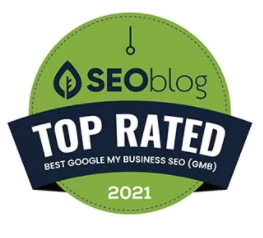It’s 2017 and online, the user experience is king. Today’s customers research products and services they’re interested in online before they decide on a purchase, 96% percent of them in fact.
That means that nearly 100% of consumer’s first impression of your business happens online. Plus, user experience (UX) is one of the key factors Google uses when it ranks websites. That’s a big deal.
But don’t despair. We’ve created a list of 5 elements you don’t need on your small business website. No matter how internet savvy you are, following these tips on what not to do will get you on your way to providing a great user experience to any visitor who lands on your business website.
1. Really long pages
We understand, you provide a lot of value and service to your customers and you want to make sure you tell them everything. You can; just not all on one page, and definitely not all on your homepage.
In fact, many digital marketing experts say that most visitors only read the information on a website they don’t have to scroll to see. But over the last few years other experts have begun to disagree, so exactly how much your customers are willing to scroll has become a little controversial.
Most people don’t mind a little bit of scrolling, so you don’t need to have a homepage that requires no scrolling, but to be safe, make sure you engage potential customers before they have to scroll and definitely don’t have a homepage that seems to go on forever with no clear guide on where your visitors should go next.
2. Link pages- Try a Blog instead
Back in the 1990’s, in order to improve their rankings on search engine results pages, websites had an entire page that was just a long list of links to other websites. Link building has changed dramatically since then and now Google actually penalizes websites that still have whole pages of just links.
That doesn’t mean that using links is dead. It’s now evolved to be part of blog search engine optimization (SEO) strategy. That’s because, over the years, Google has developed more sophisticated ways of gauging user experience including content relevance and website authority based on the number of times other websites link to a post.
Plus having a blog on your website is an essential marketing because it drives potential customers to your company’s website who might not even know they need your product or service yet because your posts show up when they search for information on topics related to your industry.
3. Keyword Stuffing
Believe it or not but search engines like Google used to be easy to manipulate just by having pages with almost nothing but keywords on them.
The text on pages stuffed with keywords makes no sense and provides an extremely frustrating experience for users. Plus Google penalizes websites who employ this type of keyword strategy. Keywords aren’t dead, but just like links, how they’re used has changed a lot since the days of link pages and keyword stuffing.
Because Google updates their algorithm frequently to improve search results for users, unless you’re a professional SEO specialist, it can be impossible to keep up with changing SEO strategy. So don’t beat yourself up if your small business website still has some pages full of keywords.
4. Large blocks of text
How we consume information has altered greatly since we all began spending increasing amounts of time online. There’s so much information available to consumers now, and we’re all exposed to so much information on a daily basis that our attention spans have decreased. Most people who visit your business’ website won’t read every word on even the homepage but instead skim quickly through it.
Huge blocks of texts with few to no breaks won’t engage most visitors to your site. In fact, it will turn potential customers off and either overwhelm them or bore them. Use short paragraphs, bullet points or numbered lists, images, video and whitespace to keep potential customers interested and delight your existing customers.
5. Adobe Flash
In the mid-1990’s Flash was the latest and greatest internet technology and by the early 2000’s it was often used to stream audio and video content. It was everywhere. Even YouTube used it to display content. Flash has a lot of problems including security vulnerabilities and high data usage, and by 2010, things had changed and Flash fell out of favor.
Most users are turned off by any content that uses Flash instead of one of the newer and better technologies. As a rule, you don’t want anything on your website that flashes at visitors, causes your website to load slowly, plays video or sound automatically, or requires a person to download a plugin or player before they can view necessary information about your business such as a marketing video.
Technology Changes. Websites Must Change Too.
Technology, including new developments in digital marketing, changes daily. Google and the other search engines are constantly updating how they rank websites and content. People’s search habits and preferences, and what types of content they prefer is evolving just as quickly as well. 10 years from now today’s state of the art websites will probably look like dinosaurs.
If you still don’t have a website for your small business or if you do, if your website is difficult to navigate, confusing, or out of date, people are going to get frustrated and move on to one of your competitors.
By not not employing these 5 out-of-date practices on your small business website, your website will provide visitors with a better experience, be more likely to show up in their Google search results and ultimately help grow your business.
See also:
[Guide] How to Make a Phone Number Click-to-Call in WordPress









